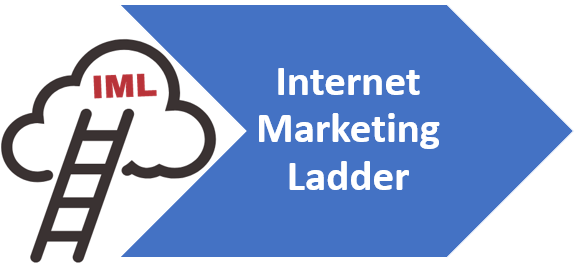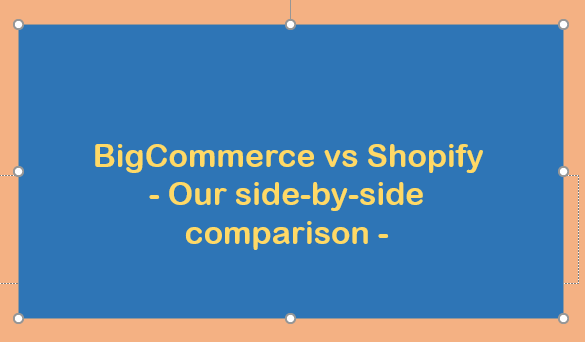Boost Your Small Business Ecommerce Strategy
small business ecommerce
Stepping into the ecommerce arena offers a thrilling opportunity for small business owners aiming to expand their reach. The landscape is filled with various platforms, each promising to support your business’s growth online. Understanding the essence of choosing the optimum platform is fundamental, setting the stage for your business’s success in the digital marketplace. This guide aims to simplify your decision-making process, ensuring your business flourishes in the online world.
Choosing the Right Ecommerce Platform
Choosing the Ideal Ecommerce Platform for Your Small Business
Diving into the world of ecommerce can be thrilling, yet overwhelming, for a small business owner. With the vast ocean of platforms out there, finding the one that perfectly aligns with your business’s unique needs can feel like searching for a needle in a haystack. But don’t fret! We’re here to steer you through the maze and help you select the perfect ecommerce platform that will propel your business to online success.
Let’s break it down into simple, bite-sized pieces so you can make an informed decision without breaking into a sweat.
-
Consider Your Budget
-
Ease of Use
-
Scalability
-
Integration Capabilities
-
Security
-
Customer Support
-
Mobile Responsiveness
-
SEO Friendly
First things first, let’s talk money. Your budget plays a crucial role in narrowing down your choices. Some platforms offer free basic features but take a cut from your sales, while others might charge a monthly fee but provide extensive customization options. Strike a balance between affordability and the features you absolutely can’t compromise on.
Unless you’re a tech wizard, you’ll want a platform that’s user-friendly for both you and your customers. A platform that offers a smooth drag-and-drop interface can save you from countless headaches. Look for a platform with an intuitive design, easy navigation for uploading products, and hassle-free checkout processes for your customers.
Dream big – because your small business won’t stay small forever. Choose a platform that grows with you. You’ll want something that handles increased traffic and sales without a glitch, and without forcing you to migrate to a more robust solution down the road.
Your ecommerce platform should play nice with other tools and services. Whether it’s email marketing software, social media platforms, or analytics tools, check for compatibility. Seamless integration not only streamifies your operations but also enhances your marketing efforts and business analysis.
This is non-negotiable. With online fraud and data breaches on the rise, ensure your chosen platform comes with stringent security measures. Look for features like SSL certificates, secure payment gateways, and data backup capabilities to keep your customers’ information safe and sound.
Even the most tech-savvy folks can encounter hiccups. Having responsive and helpful customer support can be a lifesaver. Whether it’s 24/7 live chat support, a comprehensive knowledge base, or community forums, easy access to assistance can make or break your ecommerce experience.
With more people shopping on their smartphones, your ecommerce platform must be mobile-friendly. A platform that ensures your online store looks great and functions perfectly on any device is essential for reaching a broader audience and boosting sales.
Last but not least, being found online is crucial. An SEO-friendly platform with customizable URLs, meta tags, and integration with Google Analytics can help your store climb higher in search engine rankings, drawing more potential customers to your site.
In the maze of ecommerce platforms, armed with these key considerations, you can confidently pick the one that fits your small business like a glove. Remember, every business is unique, so focus on what matters most to your operation and your customers.
With the right platform, you’re not just selling products; you’re creating an enjoyable shopping experience that keeps your customers coming back for more. Happy selling!

Effective Ecommerce Marketing Strategies
Turbocharging Your Small Business E-commerce Sales: The Ultimate Marketing Guide
Navigating the world of e-commerce can feel like leading a ship through uncharted waters for small business owners. Fear not! With the right marketing strategies, you can not only sail smoothly but also speed past your competition. Let’s dive into some game-changing tactics that’ll supercharge your small business e-commerce sales.
Engage with Email Marketing
Email marketing is like the trusty compass guiding your business towards treasure. It’s all about building relationships with your customers through personalized communication. Start with crafting engaging newsletters that your customers look forward to opening. Share exclusive offers, the latest products, or insightful content related to your niche. Remember, personalization is key. Use your customer’s name and tailor the content based on their past purchases or browsing history. This strategy ensures your customers feel valued and keeps your brand at the top of their minds.
Harness the Power of Social Media
Social media is the wind in your sails in the digital marketing world. It’s not just about posting product photos; it’s about telling your brand’s story. Use platforms like Instagram, Facebook, and Pinterest to showcase your products in action. Engaging videos, user-generated content, and behind-the-scenes peeks make your brand relatable and trustworthy. Don’t forget to leverage Instagram stories and live videos for real-time engagement. Encourage your followers to share their experiences with your products by creating a unique hashtag. This not only boosts visibility but also builds a community around your brand.
Optimize for Conversion
Imagine your e-commerce site as your digital storefront. Just as you’d arrange a physical store to maximize sales, your online store needs optimization to encourage purchases. Killer product descriptions, high-quality images, and easy navigation are just the start. Incorporate clear, compelling calls-to-action (CTAs) that nudge visitors towards making a purchase. Offer multiple payment options to remove any barriers at checkout. Additionally, A/B testing different elements on your site, like color schemes, layout, or CTA buttons, can significantly impact your conversion rates.
Invest in Pay-Per-Click (PPC) Advertising
PPC advertising can launch your small business into the stratosphere if done correctly. Platforms like Google AdWords and Facebook Ads offer the opportunity to place your products directly in front of potential customers. The beauty of PPC is its cost-effectiveness; you only pay when someone clicks on your ad. To maximize your ROI, target keywords that your ideal customer is likely to search for. Keep your ad copy concise and compelling, with clear CTAs. Remember, the goal is to make it irresistible for viewers to click through to your website.
Content Marketing: Your Storytelling Anchor
Content is the anchor that keeps your brand grounded in value. Blogs, infographics, podcasts, and videos attract customers by providing them with useful information. Here’s the secret sauce: don’t make it all about your products. Instead, focus on content that addresses your audience’s interests, problems, and questions related to your niche. This approach establishes your brand as an authority and builds trust with your audience. Plus, engaging content is share-worthy, further expanding your brand’s reach.
Leverage Influencer Partnerships
In the vast ocean of e-commerce, influencers are the lighthouses guiding customers to your brand. Partnering with influencers who share your target market can put your products in front of a highly engaged audience. Choose influencers whose values align with your brand for a natural, authentic promotion. Whether it’s through sponsored posts, product reviews, or giveaways, influencer partnerships can significantly boost your visibility and credibility.
Analyze and Adapt
Finally, navigating e-commerce requires an agile approach. Use analytics tools to track your website traffic, conversion rates, and the effectiveness of your marketing campaigns. Pay attention to what works and what doesn’t. This valuable data allows you to pivot quickly, continually optimizing your strategies for better results.
And there you have it, folks! Implementing these marketing strategies can turbocharge your small business e-commerce sales, propelling your brand towards success. Remember, the digital world is ever-evolving, so stay curious and adaptable. Happy sailing!

Optimizing Ecommerce for Mobile Users
Moving beyond traditional efforts and strategies for your ecommerce business, understanding the crucial role of mobile optimization cannot be overstated. In today’s fast-paced world, smartphones are not just accessories but lifelines that connect individuals to the vast digital expanse with a mere tap or swipe. Here’s why nailing mobile optimization is non-negotiable for your online venture:
1. Mobile Traffic Dominates:
The numbers don’t lie. Mobile devices account for over half of the web traffic globally. This statistic alone should be a wake-up call for any ecommerce business that still treats mobile optimization as an afterthought. Consumers are increasingly browsing, researching, and buying products through their smartphones. Failing to optimize your online store for mobile means missing out on a chunk of potential sales. Imagine a shopper trying to navigate a non-mobile-friendly site on their phone—the frustration might just lead them to abandon their cart and head to a competitor’s smoothly running mobile site.
2. Enhanced User Experience:
User experience (UX) is the cornerstone of successful ecommerce sites. Sites optimized for mobile ensure faster loading times, easier navigation, and a more enjoyable browsing experience. Picture this: clear, tap-friendly buttons, readable fonts, and no need for zooming in to read product descriptions or complete a purchase. These elements not just please your visitors but could very well be the deciding factors in converting them into loyal customers.
3. Google Prioritizes Mobile-First Indexing:
Google loves mobile-friendly websites and so should you. Since the introduction of mobile-first indexing, Google predominantly uses the mobile version of the content for indexing and ranking. In simple terms, if your ecommerce site isn’t optimized for mobile, it’s likely to take a hit in search engine rankings, making it harder for customers to find you online. High visibility in search results is crucial for attracting new customers, and mobile optimization is key to achieving this.
4. Boosted Conversion Rates:
The ultimate goal of any ecommerce business is conversion, whether that’s more sales, sign-ups, or another form of engagement. With a mobile-optimized site, you’re not just opening your doors to a wider audience, but you’re also smoothing the path to checkout. Simplified forms, secure payment gateways, and a mobile-friendly interface can significantly reduce cart abandonment rates and boost conversions.
5. Competitive Edge:
In the highly competitive digital marketplace, staying ahead means keeping up with—and ideally, surpassing—technological trends. Mobile optimization is one such trend that has become a standard. By ensuring your ecommerce site caters to mobile users, you’re not just meeting the basic expectations of modern consumers but also positioning your business as a forward-thinking, customer-centric brand. This could be the differentiator that sets you apart in a crowded market.
In conclusion, mobile optimization is a crucial pillar in the foundation of a successful ecommerce business. It’s not just about following trends but about responding to the clear preferences and behaviors of today’s consumers. By focusing on creating a seamless mobile experience, you’re investing in the growth and sustainability of your online store. With the monumental shift towards mobile browsing and shopping, can you afford not to prioritize mobile optimization? The answer is straightforward: if growth and customer satisfaction are on your agenda, then enhancing your site’s mobile experience should be too.

Armed with the insights outlined in this guide, making the right choice for your ecommerce platform becomes less daunting and more strategic. Prioritizing aspects like budget, ease of use, and mobile responsiveness positions your business for success and satisfaction among your customers. By focusing on these critical considerations, you’re not just building an online store; you’re fostering a vibrant shopping environment that resonates with your audience. Cultivate a digital presence that mirrors the unique spirit of your small business, ensuring it thrives now and in the future.







